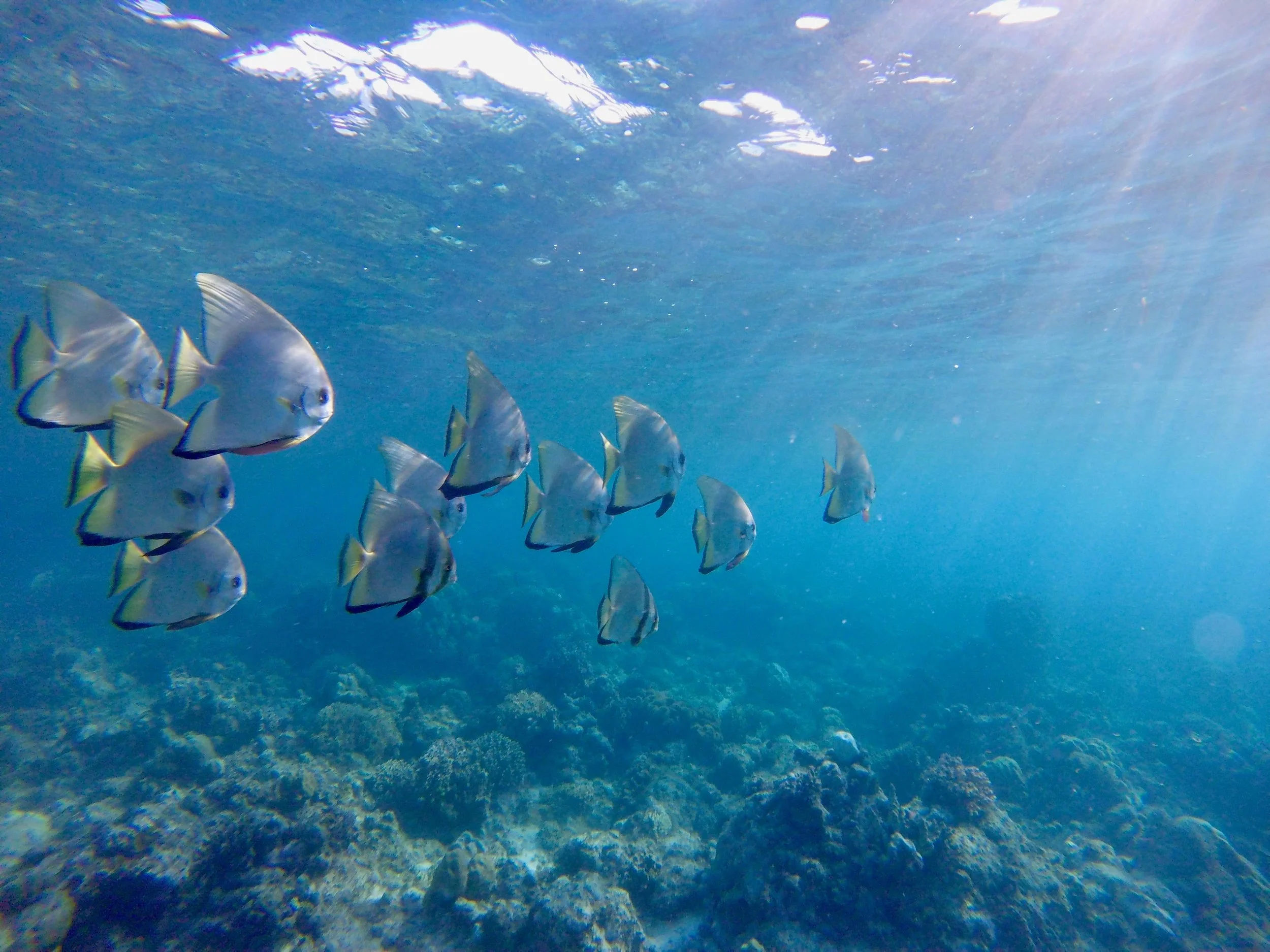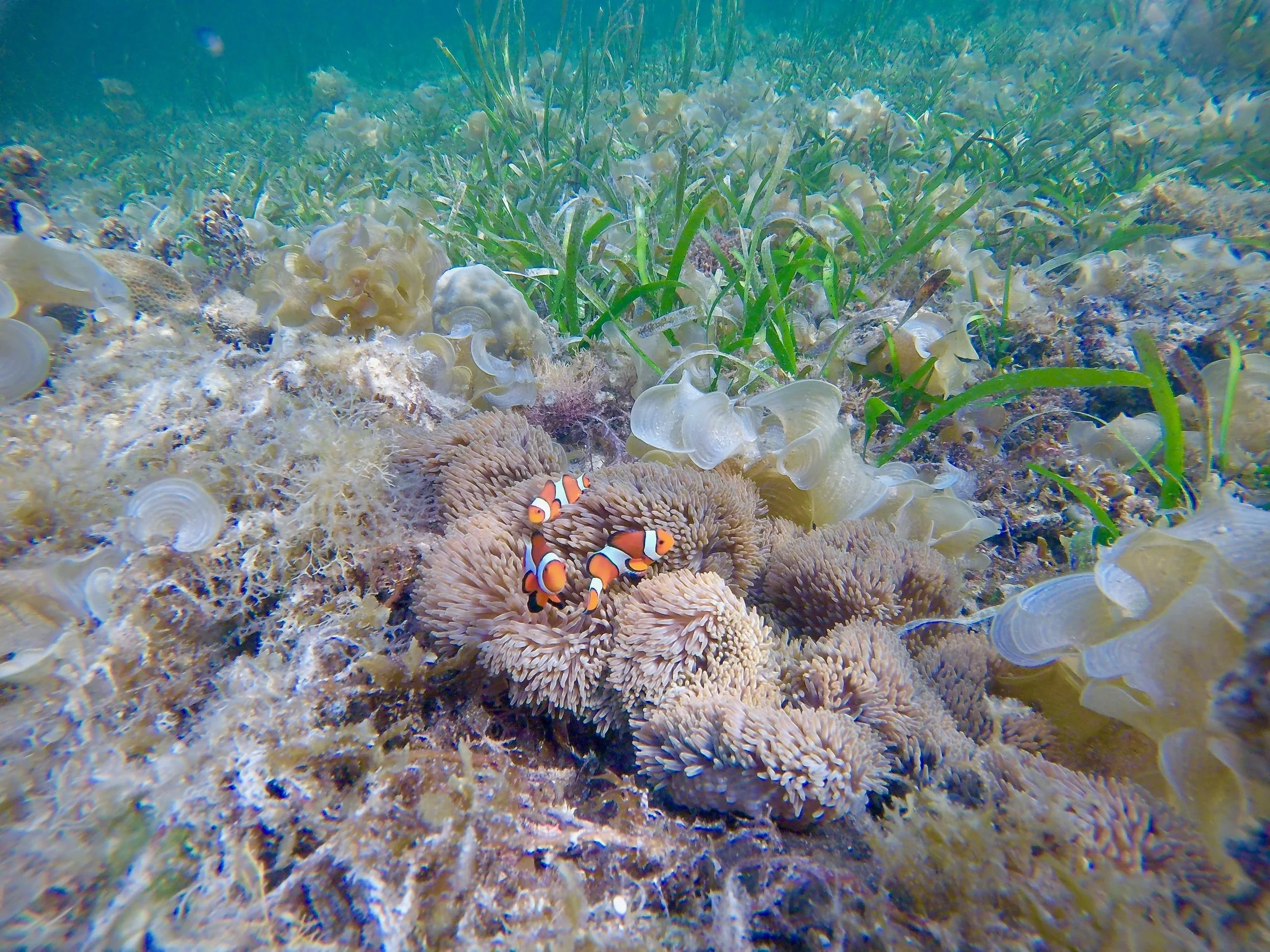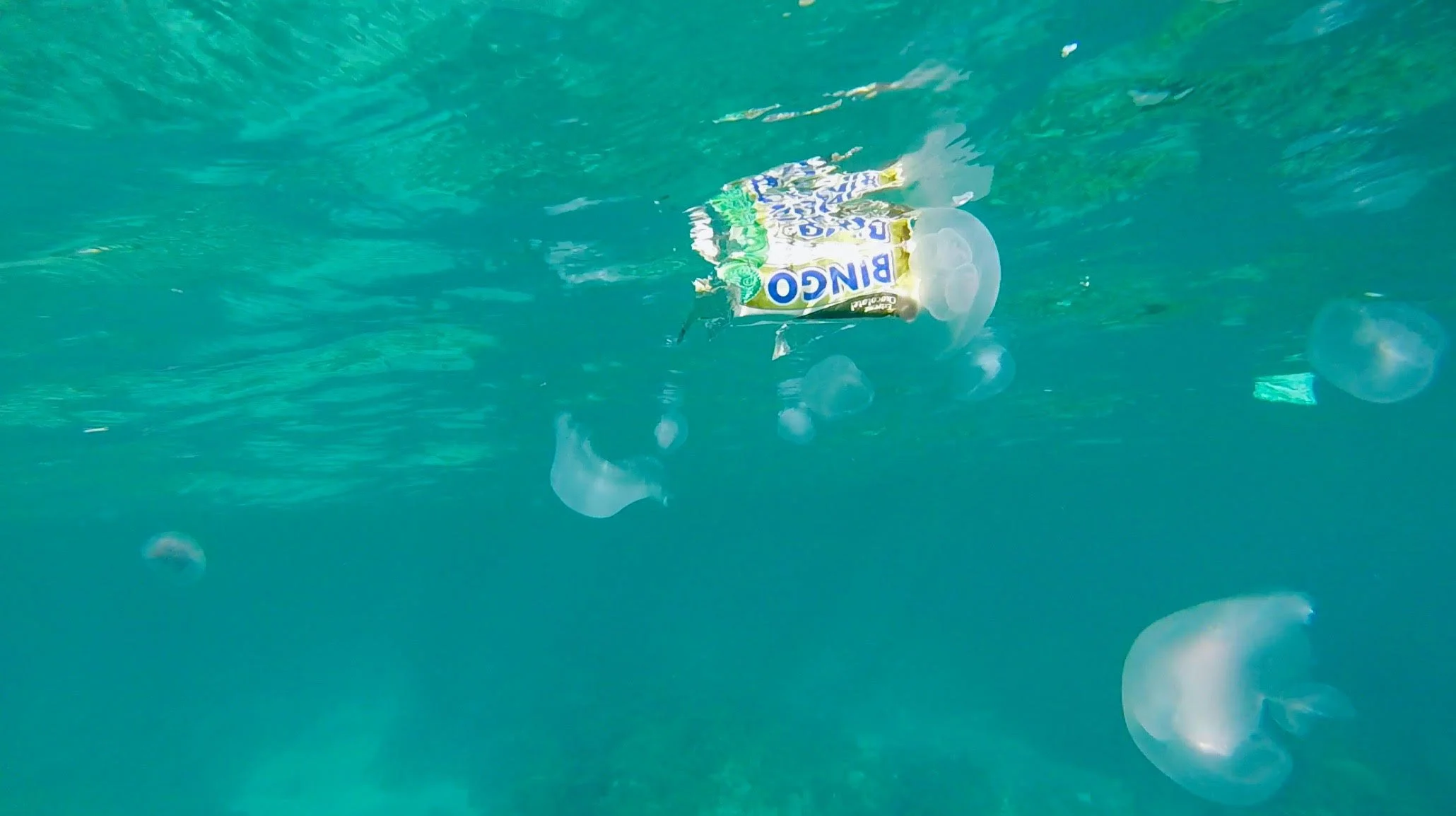A Plastic Philippines
Madison McLatchie
The Philippines is said to be one of the world’s largest plastic polluters. Plastic sachets are used for everything from hair shampoos and laundry detergent to food products and sauces. Since the recent rise in the Asian economy people have more cash to blow. But the products which this new found money is spent on produce waste which doesn’t end up in proper landfills and lest we forget, is wrapped up in our infamous packaging friend, plastic.
I just spent two weeks in a tropical paradise on an island called Danjugan, a short distance off of the West coast of Negros in the central Philippines. Danjugan Island is run by conservationists, marine biologists and researchers and around the island are three protected reef sites, where data is collected on fish, coral health, mangroves and seagrasses.
Reef fish swim over coral surrounding the island Danjugan. Photo: Madison McLatchie
Every day, I was snorkelling and free diving in these sites, discovering new and fascinating species of reef fish and coral I had never had the opportunity to see before. The experience was incredible but I began to notice a sad reality. Multiple times, I exited the water with my fin boots stuffed full of plastic rubbish that I had collected from the seafloor or from amongst a big group of jellyfish.
Beaches on the island were not pristine. Every morning a fresh batch of plastic would arrive on the shore for us to pick up before the high tide came back and swept it all out to sea again.
Adjacent to the beautiful sites of these tropical reefs, is the sad reality of plastic pollution. Photo: Madison McLatchie
One day, I spent some time across the channel on the mainland of Negros in a small village with about three hundred people. The boat dropped us off just outside of the village, on a pebbly, stony beach. The local children used this beach as a swimming location, and most days they were there in hordes playing in the water.
When the children come to the beach, so does plastic. In the way of snacks with wrappers and drinks with cartons, all to be left on the beach once the day is over, forgotten. Around where the children are swimming, rubbish litters the beach. Some is spread over the pebbles, some is stuffed in between great big boulders on the high tide line and some is just floating in the water.
I walked along the beach with a giant hessian sack stuffing in any plastic I could find. As my bag got heavier, I noticed that the children who were swimming were getting closer and closer to me. Eventually, they were running up to me with big handfuls of rubbish and helping me put it all into the sack. I was filled with hope that the young people of the Philippines can make positive change towards a healthy ocean in their country.
Floating through the beautiful blue, a trail of plastic is the giveaway of human presence. Photo: Madison McLatchie
Only 40 percent of garbage is collected legitimately within the top 5 Asian countries which pollute the oceans with plastic. There are a lot of illegal dump sites set up to save time and often trash is dumped along the roadside. In the Philippines itself it is presumed that 90% of plastic dumped illegally ends up in the ocean… is that such a surprise?
It is not hard to see why numerous whales, sea turtles and seabirds are washing ashore every day when you witness beaches covered in plastic, looking more like a dump than a beach in the tropics. Now really is the time to act and work with the next generation so we can all learn to treat our environment with respect, find a solution to the tumultuous plastic cascade and stop poisoning our oceans as well as the countless species who rely upon it.



